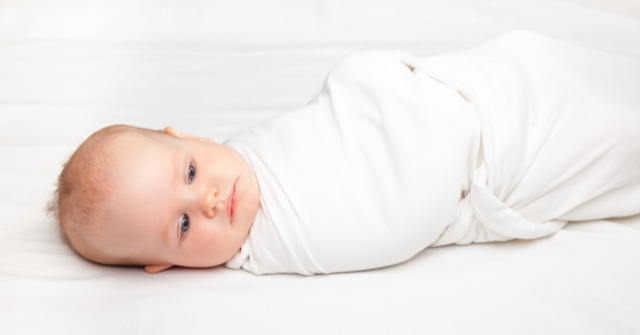By Carol Gray, LMT, CST, RPYT, ERYT-200
I can’t leave The Stuck Baby Series without describing baby immobilization and container lifestyle. In this article I outline the most significant ways in which we prevent our babies from moving after they are born. It seems like the perfect preparation for a sedentary life in a recliner in front of a screen.
Developmental delays are on the rise. It’s estimated that 15% of US children have at least one developmental delay. Only about 20% of babies and young children who experience delays are receiving services for them. Because delays are increasingly common, we may be unintentionally lowering our clinical expectations of what babies should be able to do at certain ages. I believe that fetal constraint and the practices I describe in this article are contributing to developmental delays.
Swaddling
I’m anti-swaddling — especially for sleep. Swaddling causes developmental delays. I know I’m going to take a lot of flak for this. I do believe that swaddling has a place in the first week of life (maybe two). It can be a useful tool to help soothe a baby who is very upset and needs help with what’s called control of state. You have a screaming newborn. You wrap them up. You hold them and you say sweet things to them. You unwrap them when they are calm again. This is reasonable.
What’s not reasonable is swaddling (immobilizing) for sleep and other times, for hours on end, day after day, night after night.
Swaddling is essentially a straight jacket system for babies. There are various styles of swaddling: arms in, arms out, arms at sides, arms at the chest, legs straight, legs free, etc. There are whole books devoted to swaddling methods. If you didn’t buy the book don’t worry. You’ll probably be taught how to do it before you and your baby are discharged from the hospital.
You can, of course, purchase special swaddling blankets. Many of them have Velcro fasteners to keep the baby from escaping.
Why are we swaddling babies? It is an artifact of the controversial Back to Sleep program. The controversies surrounding the Back to Sleep program are beyond the scope of this article. I promise to write about it soon, though. Anyway, most people try to follow the Back to Sleep recommendations which are supposed to reduce the risk of sudden unexplained infant death. The stakes are high.
When parents put babies to sleep on their backs, they soon realize what research has confirmed. Babies don’t sleep very well on their backs. In fact, in the first six months of life, babies who sleep on their backs, get about 8.3% less sleep than babies who sleep on their tummies. That works out to 225.2 hours of lost sleep in the first six months. Babies placed to sleep on their backs experience a disruption of brain wave patterns which reduces slow wave sleep (aka deep sleep). They startle more often. Unless they are swaddled with their arms restrained, they smack themselves in the head with their own hands each time they startle. Then they wake up. This is why parents/caregivers swaddle.
Swaddling and Positional plagiocephaly/Brachycephaly
Swaddling puts the “positional” in positional plagiocephaly. Plagiocephaly and brachycephaly are technical terms for flat spots on baby heads. These can be really extreme. I have written about flat spots on baby heads here. They are caused when baby heads are in frequent contact in one position with firm surfaces. If the baby has a head-turning pattern like torticollis, the flat spot will be on one side of the back of the baby’s head. That’s positional plagiocephaly. When the baby does not have a head-turning pattern, the flat spot will be dead center on the back of the baby’s head. That’s brachycephaly. Babies who are immobilized by swaddling for sleep are more likely to develop these problems.
Cradleboards, Swaddling and Hip Dysplasia
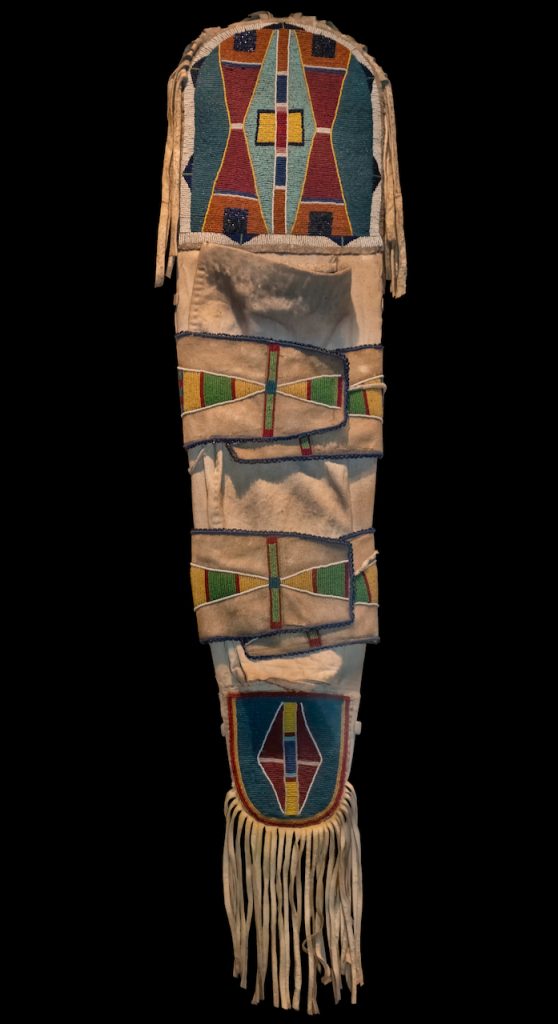 This is an antique Native American cradleboard. Cradleboards have been used by indigenous people from many nations across North America and northern Scandinavia for thousands of years. Their general design is the same. Although, there is much variation in decoration and the materials used to make them. Their purpose is to soothe babies and keep them safe while their mothers travel or work. Cradleboards can be carried or worn on the mother’s back while she is traveling. They can also be set or hung nearby while she works.
This is an antique Native American cradleboard. Cradleboards have been used by indigenous people from many nations across North America and northern Scandinavia for thousands of years. Their general design is the same. Although, there is much variation in decoration and the materials used to make them. Their purpose is to soothe babies and keep them safe while their mothers travel or work. Cradleboards can be carried or worn on the mother’s back while she is traveling. They can also be set or hung nearby while she works.
Cradleboards are essentially a swaddling system that keeps baby’s arms at their sides and their legs straight. The frame is usually wood or a woven fiber basket. The rest of it may be made from animal skin or cloth with padding and a lacing system to hold the babies snugly inside. There is usually a hoop which can be covered to shade a baby from the sun or inclement weather and also provide accidental impact protection. When babies get older, their arms and hands may be free to play with an attached toy. Once babies are old enough to crawl and walk they are tended by others while their mothers work.
Colonialism and cultural assimilation has caused a sharp decline in cradleboard use in North America. Some research shows that hip dysplasia has also declined in native populations. Cradleboards are making a comeback as part of a movement among native people to return to traditional ways. Some people who are using them again are aware that straight legs with knees together for prolonged periods of time can contribute to hip dysplasia. This is because the straight-leg position pulls the head of the femur (thigh bone) out of the acetabulum (hip socket). I have written about hip dysplasia here. Those who are aware of this are modifying their cradleboard designs to facilitate hip and knee flexion (froggy position). The froggy position places the head of the femur firmly into the acetabulum, thus encouraging normal hip joint development.
Because colonialism and cultural assimilation caused the steep decline in cradleboard use, some people have been understandably resistant to the message that the straight-leg confinement can contribute to hip dysplasia. They feel that an often-quoted 1968 study investigating the link between cradleboards and hip dysplasia among babies in the Navajo nation was racially and culturally biased.
Interestingly, in Japan In 1965, the incidence of hip dysplasia was 1.5%-3.5%. At the time most people were using a swathing (swaddling) diaper that kept baby legs straight and together. Eight years later, after implementation of a national program to eliminate swaddling with the hips and knees in an extended position, the incidence of hip dysplasia had dropped to 0.2%.
The Unforgettable Swaddled Baby
 I’ll never forget a five month old baby I once saw in my bodywork practice. When placed on her belly she did a perfect locust pose. She could lift her head and feet, but she kept her arms at her sides. She had no ability to put her hands in front of her. She was, therefore, unable to accomplish any weight-bearing with her forearms or hands.
I’ll never forget a five month old baby I once saw in my bodywork practice. When placed on her belly she did a perfect locust pose. She could lift her head and feet, but she kept her arms at her sides. She had no ability to put her hands in front of her. She was, therefore, unable to accomplish any weight-bearing with her forearms or hands.
At five months I occasionally see babies who are crawling on hands and knees. Nowadays in the US, we think babies are wired up OK if they are crawling on hands and knees at nine months. At five months this baby had not mastered the basics of tummy time (lifting the head with the chin parallel to the floor and weight-bearing on the forearms) that are usually accomplished by three months.
Babies must crawl before walking for normal brain development. Cross-pattern crawling is defined as the right arm and left leg moving at the same time, then the left arm and right leg moving at the same time. Crawling in this pattern on hands and knees is essential for reading ability later on. This is not a developmental step that should be skipped. It’s a big deal.
Now back to the baby. My first question for the parents was, “Is she swaddled for sleep?” Their answer: “Yes.” She had been swaddled for sleep with her arms at her sides consistently for five months — since birth. I told them to stop immediately — cold turkey. I said they would probably have a few nights of crappy sleep, but nights would then get better. Incidentally, the crappy sleep thing never happened for them. More importantly, their baby began to develop normal range of motion in her shoulder joints and normal upper body strength. Babies can’t crawl on hands and knees without these two essential ingredients — upper body strength and mobility.
The shoulder joint is the most moveable joint in the body. At least it should be. When we don’t have the opportunity to move, our brains can forget how to do it. Remember, the only reason you have a brain is to move your body. Ultimately, with some help, this baby continued to develop normally — on a delayed timetable. It’s important to note that she did not have a congenital or acquired brain injury that caused her developmental delay. She simply didn’t have the opportunity to move her body in normal ways. It took some time for her to catch up motor skill-wise.
Infant Seats
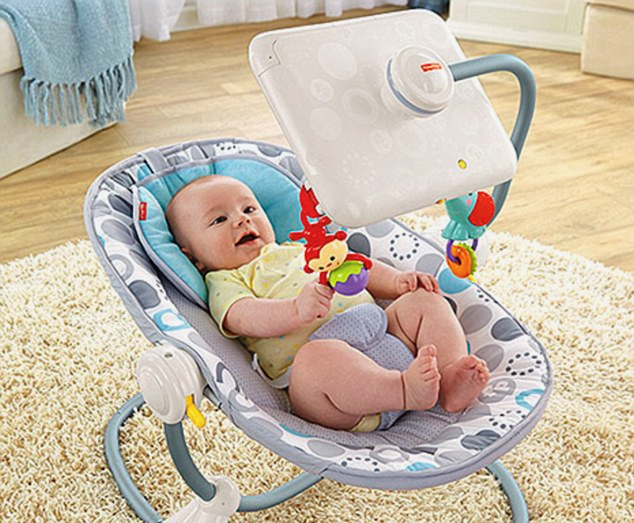 These devices confine babies in a semi-reclining position — not unlike an infant car seat. While the babies are semi-reclined, they are essentially flat on their backs. This, in concert with the Back to Sleep program, increases the risk of babies developing brachicephaly or plagiocephaly. Many of these devices tend to keep baby legs straight increasing the risk of hip dysplasia developing after birth. Some of them swing and/or vibrate to keep the baby placated longer. They have places to attach toys — again, to entice the baby to stay in the seat as long as possible.
These devices confine babies in a semi-reclining position — not unlike an infant car seat. While the babies are semi-reclined, they are essentially flat on their backs. This, in concert with the Back to Sleep program, increases the risk of babies developing brachicephaly or plagiocephaly. Many of these devices tend to keep baby legs straight increasing the risk of hip dysplasia developing after birth. Some of them swing and/or vibrate to keep the baby placated longer. They have places to attach toys — again, to entice the baby to stay in the seat as long as possible.
Some of these seats “grow with your baby” into toddlerhood. That’s right. You now have the option of keeping a child confined in one of these contraptions after they have learned to walk.
I couldn’t resist including a picture of an infant seat that hit the market a few years back. It struck me as so outrageous at the time. It’s an infant seat with a bracket to attach an iPad or other tablet. Apparently, other people thought it was outrageous, too. It was taken off the market, but the idea behind it remains: It’s culturally desirable to keep babies confined and immobile for as long as possible.
Play Mats
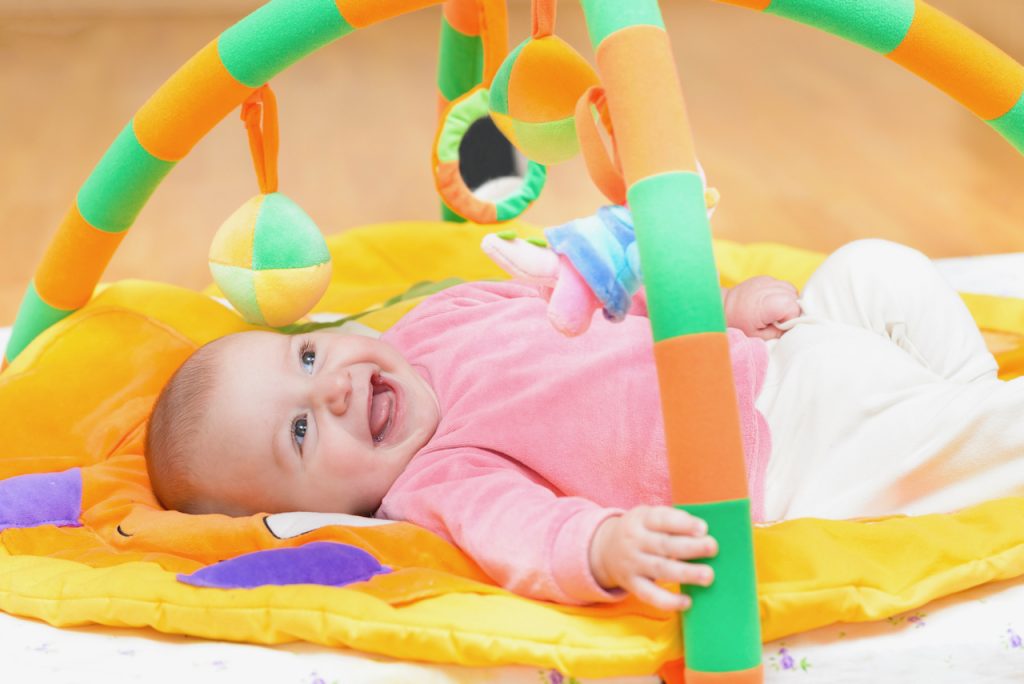 These things are ubiquitous. Arguably, babies can move their bodies while playing on one of these. The problem is that they mostly have to be on their backs to enjoy themselves. These are the same babies who sleep on their backs and (we hope not, but probably do) spend a ton of time confined in baby carriers, strollers and car seats — also on their backs. The enticing toys hang from the overhead hoops. The movements babies use to “play” with the hanging toys are batting with their hands and feet. That’s pretty much it.
These things are ubiquitous. Arguably, babies can move their bodies while playing on one of these. The problem is that they mostly have to be on their backs to enjoy themselves. These are the same babies who sleep on their backs and (we hope not, but probably do) spend a ton of time confined in baby carriers, strollers and car seats — also on their backs. The enticing toys hang from the overhead hoops. The movements babies use to “play” with the hanging toys are batting with their hands and feet. That’s pretty much it.
Play mats contribute to babies becoming tummy time haters. Babies who are encouraged to play on their backs hardly ever spend time on their tummies. They don’t like tummy time as much as babies who are accustomed to it. The tummy time haters are the ones who increasingly miss the opportunity to strengthen and move their bodies in essential ways. Babies should be able to bear weight on their hands and forearms as they reach toward and grasp attractive objects (toys) that are on the floor with them. These are NORMAL developmental movement steps. For babies to have normal development, the steps need to be done in the proper sequence.
This is obvious, but I must state it anyway. Babies who never spend time on their tummies will never crawl. Crawling on hands and knees is ESSENTIAL for normal brain development.
My advice: Take the toys off the hoops and place them on the mat with the baby. Discard the hoops. Roll the baby over. Socially engage and encourage the reluctant tummy-timer, if needed. Repeat. If your baby is a reluctant tummy-timer, you may need to re frame the definition of tummy time for yourself. It is a therapeutic intervention rather than an optional activity to be done once in a while if your baby is into it.
Car Seats
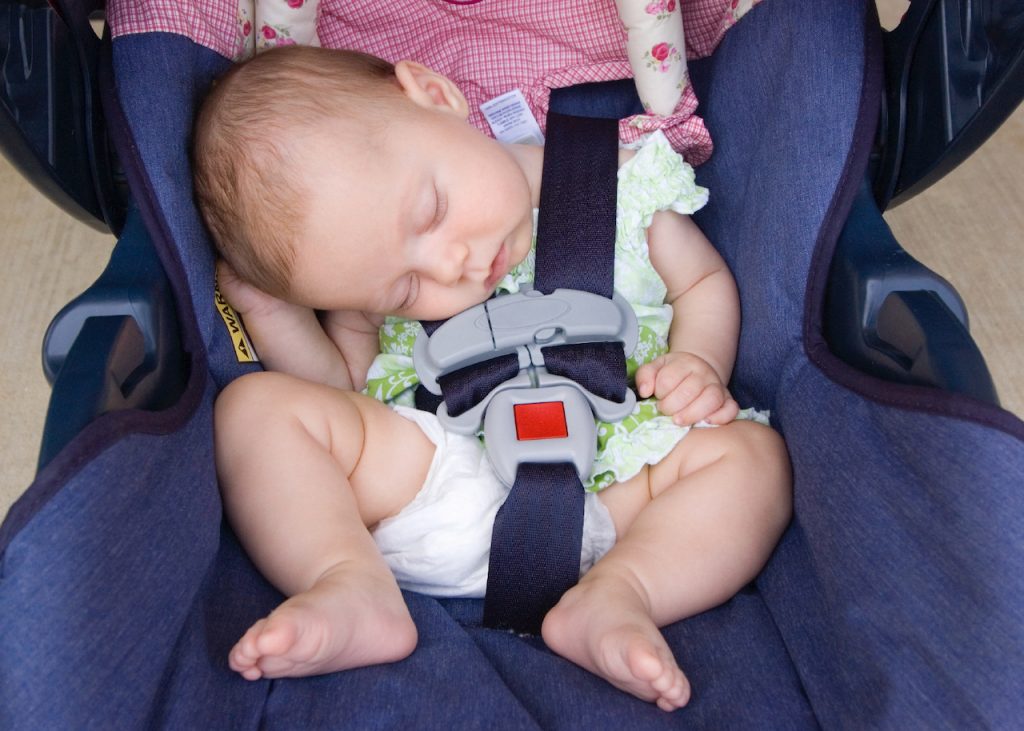 Car seats are the best invention ever. Prior to the widespread use of infant car safety seats many babies were injured and killed in auto accidents. These numbers have gone way down. The problem with car seats is that they are easy to take out of the car with the baby still in them.
Car seats are the best invention ever. Prior to the widespread use of infant car safety seats many babies were injured and killed in auto accidents. These numbers have gone way down. The problem with car seats is that they are easy to take out of the car with the baby still in them.
Here’s a scenario. You arrive at the grocery store. You only need three things. Your baby who has been fussy all morning is finally asleep in their car seat. Do you take the baby out of the car seat and risk grocery shopping with a screaming baby? Might the baby immediately show feeding cues as you try to get them out of the car seat? Would you then have to feed the baby before you can go into the store thus making a fifteen-minute errand into a one hour ordeal? What do you do? You take the car seat out of the car with the baby still in it, put the whole thing in the shopping cart and hope for the best.
Next scenario: You get home from grocery shopping and the baby is still sleeping in the car seat. In 45 minutes you have to leave the house to collect your other child from preschool. What do you do? You bring the car seat into the house with the baby still in it, hope for the best, put the car seat with the sleeping baby back into the car 45 minutes later, drive off to the preschool still hoping for the best. If this works out, your baby will have been confined to a car seat way too long.
Did I mention that the car seat also clips into a stroller frame? What if your toddler wants to go for a walk after school and the baby is still sleeping in the car seat? You get the picture.
I understand the dilemmas presented here. Nonetheless, it would be irresponsible for me to not point out that the car seat lifestyle is less than ideal for babies.
Strollers
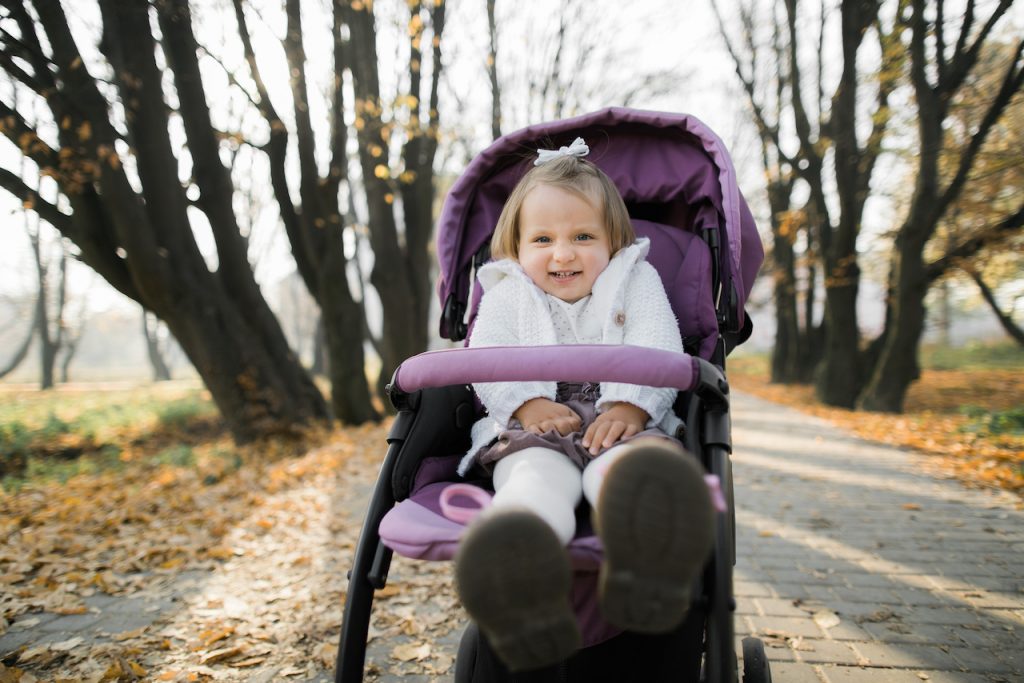 I see so many three year olds riding in strollers with a snack and a screen for their entertainment. Children are confined while riding in a stroller. They can’t even wiggle around much while riding. Are we creating a generation of snack-eating passengers?
I see so many three year olds riding in strollers with a snack and a screen for their entertainment. Children are confined while riding in a stroller. They can’t even wiggle around much while riding. Are we creating a generation of snack-eating passengers?
A walk with a three-year-old can be a very slow-moving adventure — at least from an adult perspective. But it’s really important for a child to learn balance while walking on the curb, to reach up to touch a low-hanging tree branch, to stomp in a puddle, drag a stick along a chain-link fence and kick some leaves. These sensory experiences acquaint children with the rest of the world. It also provides the gift of movement.
My advice: take the time — at least once in a while — to slow down and observe those little close to-the-ground treasures through the eyes of your walking child. Sometimes examining a stick with some dirt and two bugs on it really is more important than getting somewhere fast.
Bumbo Seats
 These infant furniture items were originally invented for developmentally delayed children who needed support for sitting upright to be fed and to socialize. Somehow, they immediately made their way into the homes of babies who were developing typically and didn’t need them at all. They aren’t especially safe. Despite warnings, people leave babies in them in the shower, on tables or other high places and/or fail to secure the baby with the seat belt. Many babies have been injured. Some have died.
These infant furniture items were originally invented for developmentally delayed children who needed support for sitting upright to be fed and to socialize. Somehow, they immediately made their way into the homes of babies who were developing typically and didn’t need them at all. They aren’t especially safe. Despite warnings, people leave babies in them in the shower, on tables or other high places and/or fail to secure the baby with the seat belt. Many babies have been injured. Some have died.
Prolonged propping in a seated position can load the spine and pelvis in ways that aren’t healthy for a baby who can’t get into a sitting position on their own. Did you know that the way babies actually learn to sit on their own is to back in from hands and knees?
Placing a baby in a seated position and hoping they can “learn” to balance is not sitting. Period. My advice: Get rid of the Bumbo seat. Let your baby roll around, move and play on the floor. If you don’t have a whole room that works as safe play space, invest in baby gates or fences. Babies really need a place where everything they can reach is safe for them to touch — and OK with you. Your baby really wants to hold (and taste) the remote.
Walkers
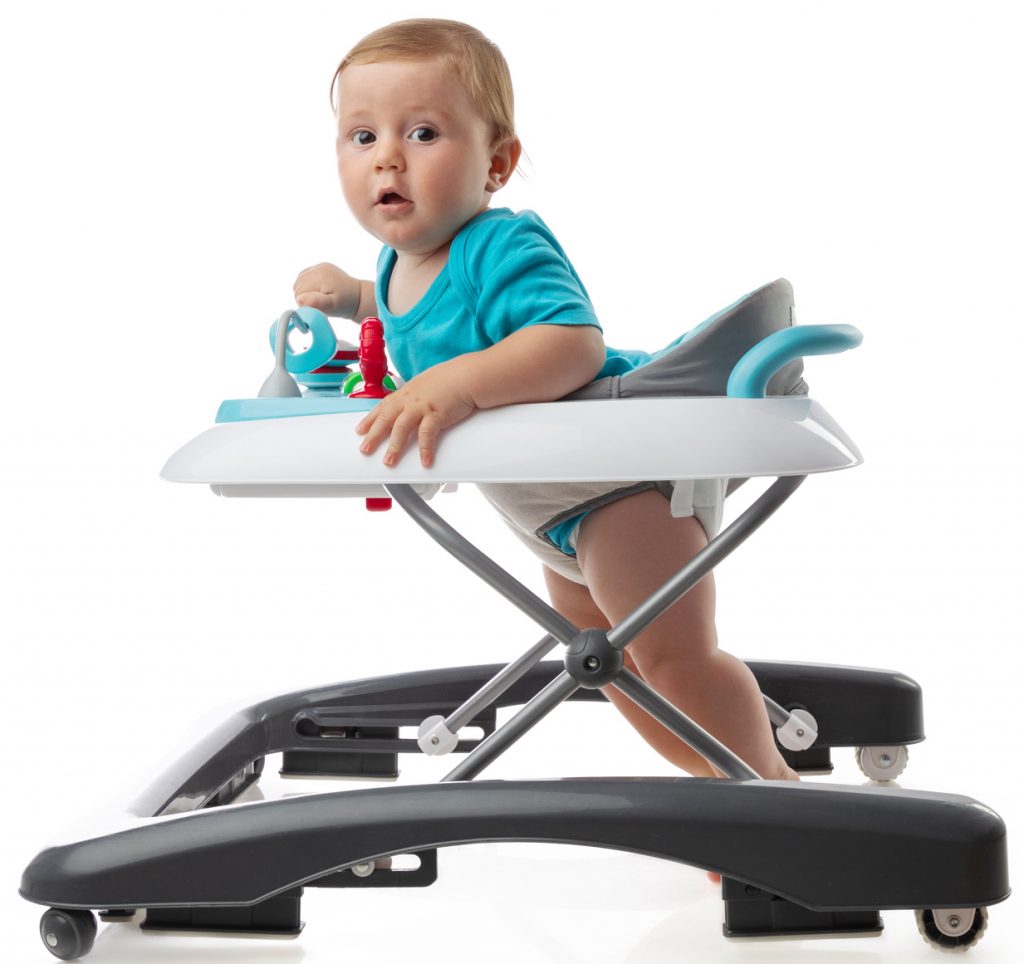 Walkers don’t teach babies to walk. In fact, like the other immobilizing equipment, walkers can cause developmental delays by preventing babies from accomplishing the normal movement steps that must be mastered on the way to walking. Babies also miss the opportunity to develop appropriate core strength, cross patterning and coordination when they are in a walker. The baby in this picture isn’t learning to walk. This baby is learning how to propel themselves in a walker. Babies are ready to walk when they can get there on their own.
Walkers don’t teach babies to walk. In fact, like the other immobilizing equipment, walkers can cause developmental delays by preventing babies from accomplishing the normal movement steps that must be mastered on the way to walking. Babies also miss the opportunity to develop appropriate core strength, cross patterning and coordination when they are in a walker. The baby in this picture isn’t learning to walk. This baby is learning how to propel themselves in a walker. Babies are ready to walk when they can get there on their own.
Walkers can be dangerous. Babies have “walked” these things down flights of stairs. Sometimes they have wiggled out of walkers ultimately landing on their heads on the floor. When I was a young mother, my mother’s advice to me was, “Put the babies on the floor. They can’t fall off the floor.” I also have photo documentation of me and my sister in walkers. She wised up before my kids were born.
Jumperoo/Johnny Jump Up/Jolly Jumper
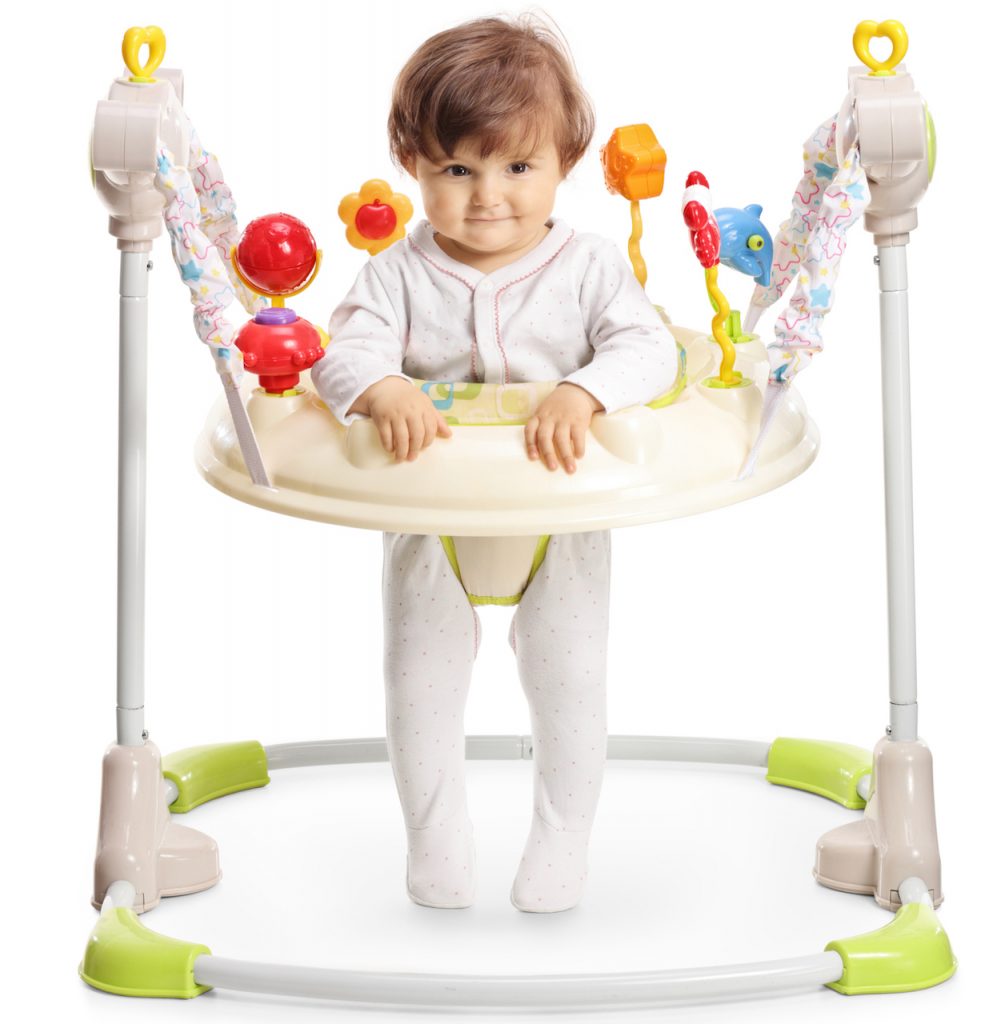 My oldest son, Jason, spent time in a walker and a Johnny Jump-Up, a contraption similar to the one pictured here. After he learned to walk on his own (until he was about 5) he had a perpetual bandage on his chin – occasionally with stitches underneath. He was fearless -– sometimes overestimating his capabilities. He fell a lot and often landed on his chin.
My oldest son, Jason, spent time in a walker and a Johnny Jump-Up, a contraption similar to the one pictured here. After he learned to walk on his own (until he was about 5) he had a perpetual bandage on his chin – occasionally with stitches underneath. He was fearless -– sometimes overestimating his capabilities. He fell a lot and often landed on his chin.
Babies absolutely LOVE these jumping things. Here’s what I don’t love about them. You can see that the baby in the picture is touching the floor with their toes. This thing is suspended by bungee-like elastic cords that bounce the baby up and down. Each time the baby’s forefoot touches the ground they reflexively straighten their legs and BOUNCE. When babies do this they are foreshortening and abnormally strengthening their calf muscles. When these babies eventually walk on their own they may be toe-walkers. If they dodge that bullet, they may end up with an abnormal gait — placing the forefoot first and the heel last. It should go the other way around — heel first, forefoot second.
My son was the forefoot first kind of guy — hence the general lack of coordination leading to the perpetual bandage on his chin.
If a messed up gait isn’t bad enough, these things also interfere with primitive reflex integration. I have written about primitive reflexes here. These are automatic movements babies make in response to certain touches to particular parts of their bodies. These reflexes are supposed to integrate (go away) when the need for them no longer exists. They are replaced by purposeful, learned movements. The movement that is stimulated by the jumpers is called the stepping reflex. It serves babies well as they are getting themselves born. After a baby’s head is born there is a pause before the next contraction that usually gets the shoulders born. Because part of the baby just exited the parent’s body there is some slack in the top of the uterus. When the uterus contracts again the top of the uterus comes into contact with the soles of the baby’s feet stimulating the stepping reflex. This reflex, along with pressure from the maternal oblique pelvic floor muscles, causes the baby to rotate — freeing the shoulders and completing the birth. Newborn babies use this reflex in other ways, such as part of breast-seeking behavior. By two months of age the stepping reflex is supposed to go away. It’s not supposed to be repeatedly elicited by a baby jumper. When primitive reflexes don’t integrate (go away) it interferes with normal, learned developmental movements.
Bottle Nursing (in One Position)
 This is not an indictment of bottle nursing. It’s an indictment of the way we do it. It’s habitual. We hold the baby in a certain way. We hold the bottle in a certain way. We get a system that works and stick to it. Breastfeeding babies almost always nurse from both breasts. They get to switch things up as they feed. As they get older they can be quite acrobatic about squirming around and varying their body positions while still holding onto the parent’s nipple. The bottle-nursers have less opportunity to do this. When they get older they hold the bottle themselves. It’s good for the caregiver’s body to hold the baby in different ways and hold the bottle in less preferred ways, too.
This is not an indictment of bottle nursing. It’s an indictment of the way we do it. It’s habitual. We hold the baby in a certain way. We hold the bottle in a certain way. We get a system that works and stick to it. Breastfeeding babies almost always nurse from both breasts. They get to switch things up as they feed. As they get older they can be quite acrobatic about squirming around and varying their body positions while still holding onto the parent’s nipple. The bottle-nursers have less opportunity to do this. When they get older they hold the bottle themselves. It’s good for the caregiver’s body to hold the baby in different ways and hold the bottle in less preferred ways, too.
Young babies are actually supposed to look at the outside world with one eye at a time while nursing. The breast obscures the view from the other eye. The eyes are supposed to take turns being the world-viewing eye. This helps support visual development. If we bottle nurse a baby who is lying out in the open flat on their backs we lose an opportunity. My advice: Hold them close and switch it up.
In Conclusion
These movement-limiting things I have written about are things that most of us do or have done. You do it. I did it. My mother did it. My advice is to be thoughtful about it. If you’re going to use containers and infant furniture, use them judiciously and carefully. Consider the alternatives and make it a priority to give your baby the best opportunities for freedom of movement and a healthy body.
Next week I’ll write about the irony of The Developmental Derby and infant constraint. This will include a discussion of natural motor skill acquisition for babies. Until then…
Love,
Carol
About Carol Gray
 Carol is the founder and owner of MamaSpace Yoga. She has been a therapeutic bodyworker in private practice for over 31 years. She specializes in Craniosacral Therapy for pregnant and postpartum people and infants. Carol has spent years developing hands-on techniques to enhance the mobility in pregnant bodies including the bony pelvis, the abdominal organs, the support structures and lower segment of the uterus. She is proud to have pioneered the integration of this gentle manual therapy into prenatal care, the birth place and postpartum care for birthing parents and babies. The goal is to give babies more room to develop, grow and get born. Her specially-designed yoga classes have grown naturally from the roots of bodywork and yoga.
Carol is the founder and owner of MamaSpace Yoga. She has been a therapeutic bodyworker in private practice for over 31 years. She specializes in Craniosacral Therapy for pregnant and postpartum people and infants. Carol has spent years developing hands-on techniques to enhance the mobility in pregnant bodies including the bony pelvis, the abdominal organs, the support structures and lower segment of the uterus. She is proud to have pioneered the integration of this gentle manual therapy into prenatal care, the birth place and postpartum care for birthing parents and babies. The goal is to give babies more room to develop, grow and get born. Her specially-designed yoga classes have grown naturally from the roots of bodywork and yoga.
Carol has dedicated her professional life to supporting expectant and new families by promoting gentle aware birth. She attended births for over 35 years – at first as a doula and from 2000 to 2012 as a midwife. She has since retired from attending births in order to focus on practicing and teaching CST and prenatal yoga. Her many years as a birth worker have forever changed her and her worldview. Those experiences remain an integral part of who she is as a therapist and teacher.
Carol is the founder and director of the The Carol Gray Center for CST Studies®. She teaches high-quality, small group classes that are appropriate for bodyworkers, birth attendants and other health professionals. She is approved by the National Certification Board for Therapeutic Massage and Bodywork (NCBTMB) as a continuing education approved provider.

